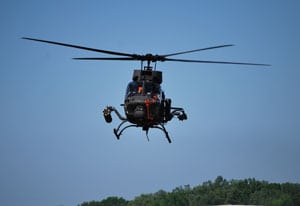
The Army’s OH-58F Kiowa Warrior completed its first flight at Redstone Arsenal, Ala., yesterday, with a Cockpit and Sensor Upgrade (CASUP) that marks the addition of the most current technology available. In Huntsville, Army officials commemorated the first flight and the first new designation change--F--since 1990. OH-58F Kiowa Warrior Courtesy PEO Aviation “The OH-58 Kiowa Warrior is a phenomenal aircraft and continues to prove itself as an indispensible armed scout asset for our ground commanders,” said Maj. Gen. William “Tim”…

 By
By 









